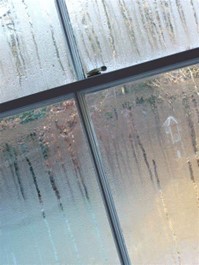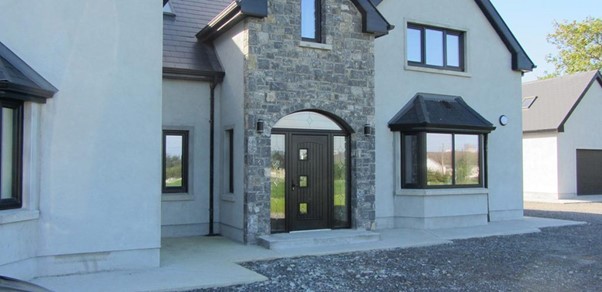WHAT CAUSES EXCESSIVE CONDENSATION IN A HOUSE?
Condensation on
windows and
doors happens because water vapour in the air accumulates on surfaces at lower temperatures.
When damp air comes into contact with a cold, impervious surface, such as the glass of your windows and doors, it releases moisture onto the glass as water droplets.
Internal home condensation issues commonly occur because of too much humidity in the home or room with little air circulation. Low internal room temperatures can also create cold surfaces, such as windows or cold exterior walls, which allow warm air to condense onto them.
WHAT IS THE BEST WAY TO STOP CONDENSATION?
You need to be aware of 3 types of condensation: external, internal and humidity condensation, but only 2 are a real cause for concern.
EXTERNAL CONDENSATION
A sign of good effective glazing is when condensation builds up on the outside of the glass. This is because less heat is being lost through the windows, making the exterior pane of glass the coldest surface. It may not be very pleasant, but this will clear as the outside temperature rises.
Weather conditions outside your house can differ on which windows attract more condensation. For example, if the sun rises at the front of the property and the back is more shaded or sheltered, then condensation on the front windows and doors will clear much quicker than the windows and doors at the back of the property.
INTERNAL CONDENSATION
Internal condensation is due to excess moisture inside your home; the only way to stop this is to eradicate the moist air. You will need effective humidity control, ventilation, or insulation techniques, which should be implemented as quickly as possible to prevent any potential damage in your home, such as rotting timber windows.
HUMIDITY CONTROL
Humidity is a recognised growing problem in UK homes as insulation in building materials in the past needed general improvement. The new building regulations rules regarding windows and door installations have been updated and came into force on 15th June 2022. The introduction of any new installations of replacement windows in England and Wales from this date must now be fitted with trickle vents to comply with current building regulations, and doors have become far more energy efficient to prevent condensation issues.
WHAT IS A TRICKLE VENT?
A trickle vent is a slotted vent at the top of the window or door that can be opened and closed. Trickle vents have been designed to allow a small amount of air circulation. This reduces the risks of condensation, dampness, and mould inside homes, especially around windows, as these are usually the coldest places in a home where condensation could form. Trickle vents will also improve air quality in your home and benefit your long-term health.
HOW DO YOU STOP CONDENSATION IN THE WINTER?
The aim is to reduce humidity, increase ventilation and improve insulation within your home. Here is a bullet-point list of tips we have for you this winter to combat condensation.
REDUCE HUMIDITY TIPS TO PREVENT HOME CONDENSATION
- Cover up fish tanks Use dehumidifiers to remove excess moisture from the air Don’t or stop using portable gas and paraffin heaters Effective heating keeps surfaces above dew point temperatures Use bathmats when bathing Use or install extractor fans in kitchens and bathrooms, making sure that the doors are kept shut when they’re in use Use saucepan lids when cooking
INCREASE VENTILATION AT HOME TO STOP CONDENSATION
- Avoid drying clothes inside the home Avoid overfilling wardrobes, cupboards, etc Leave at least 50mm between furniture and walls Properly vent washing machines and tumble dryers Regularly open window trickle vents, windows, skylights, and roof vents Install double or triple glazing
INSULATION TO REDUCE HOME CONDENSATION
- Double or triple glazing Draft proofing Loft insulation
HOW DO I PREVENT CONDENSATION IN MY HOME?
Ultimately, the only cure for condensation is to prevent the condensation from ever occurring in the first place. Beyond wiping away condensation when it appears, there are plenty of ways to fight condensation and banish mould for good.
Along with improving your home’s ventilation, you can learn how to prevent condensation on windows and doors with these long-term steps:
- Dry wet clothes outdoors or in a tumble dryer Use extractor fans in your kitchen and bathrooms Installing double or triple glazing Keep curtains open for air circulation against your windows Use cavity wall and loft insulation to make your heating use efficient




